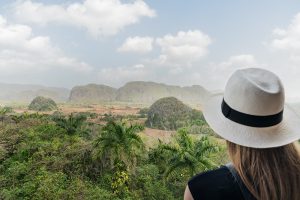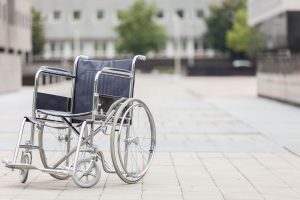Packing for a white water rafting trip can be tricky. What should you wear in warm weather? In cold water? What should you bring on the raft? And what are some tips and tricks to make your rafting experience more enjoyable?
White water rafting is an exhilarating adventure, and I highly recommend it to anyone looking for a rush, however, there are a few things you need to consider before you go. In this article, I’ll give you tips on what to wear while rafting, as well as some other essentials you’ll want to bring with you. Read on and get ready for the time of your life!
What to wear white water rafting
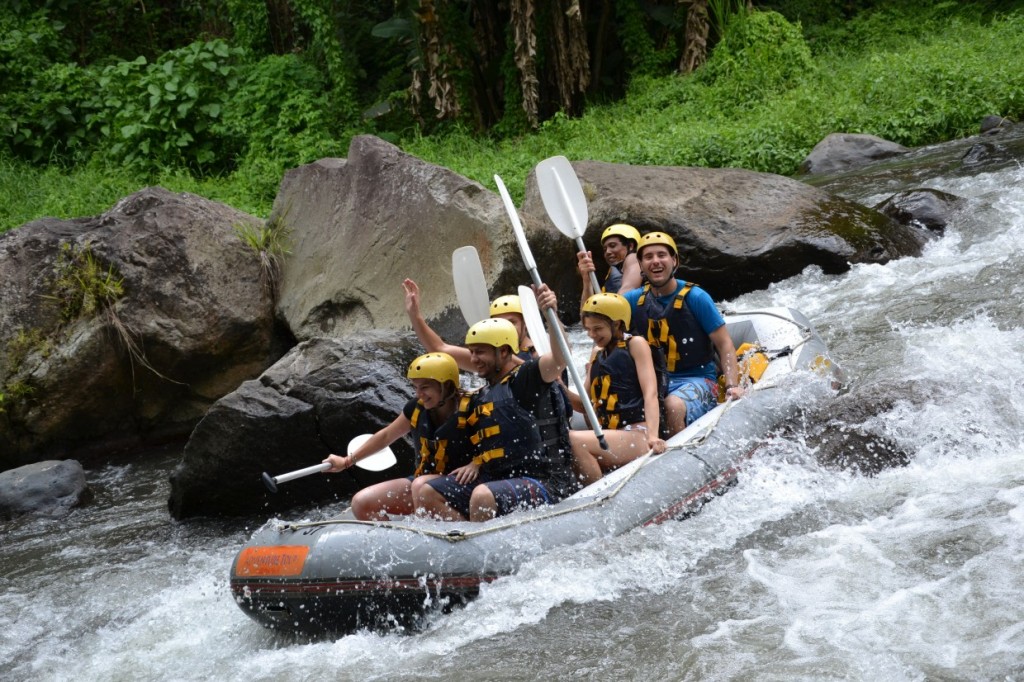
One of the most important things to keep in mind when preparing your trip is layers. You need to be able to adjust your clothing while on the river. To stay comfortable, dress in layers that allow you to remove or add clothing with ease when exterior temperatures change or your body temperature rises or falls.
Which layers and what you wear and take with you on a white water rafting trip depend on the weather and water conditions.
Related: Check out our white water adventure on the Kicking Horse River in BC, Canada
What you should wear, no matter the weather and water conditions
⇢ Always wear a personal flotation device (PFD): Your life jacket is your friend. It’s the one thing that can keep you safe in any body of water, so be cautious and always keep your PFD on.
⇢ Helmets: Helmets must fit snugly enough so they won’t move around. Avoid helmets with fixed bills, as they can injure the person in front of you if you are thrown forward.
What to wear while white water rafting in cold water
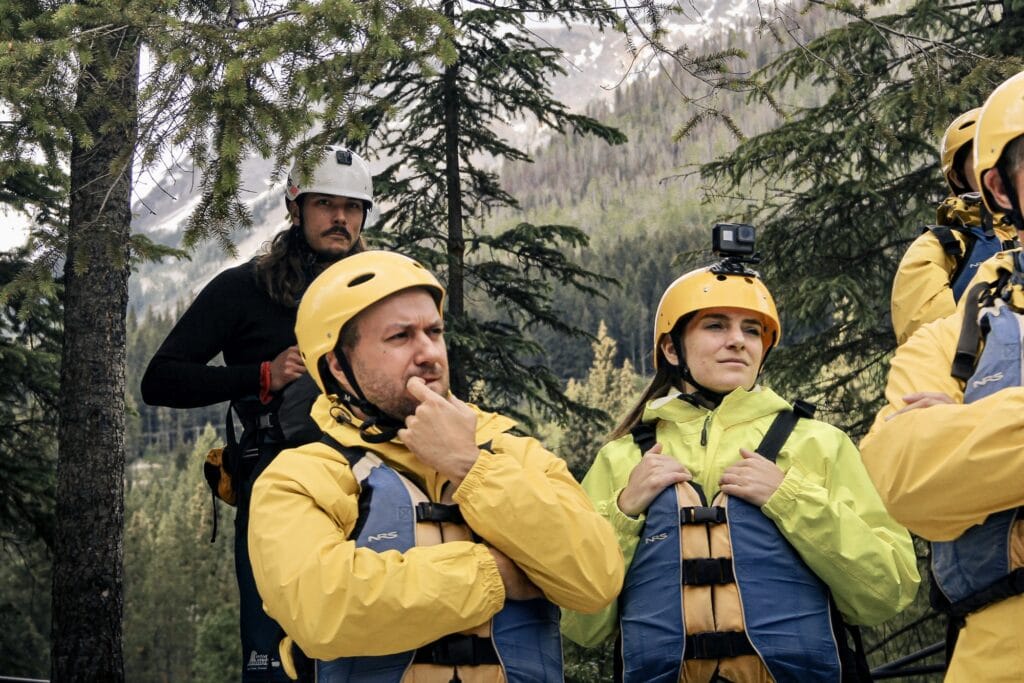
⇢ First layer: Wear quick-drying layers, such as a bathing suit or board shorts, that won’t pinch or ride up under a wetsuit.
⇢ Wetsuit: When participating in watersports it is recommended to dress for the water temperature, rather than the air temperature. When the water temperature drops below 21 Celsius (70° Fahrenheit), you should put on a wetsuit.
Wetsuits can make all the difference when you’re white water rafting during cold weather. By trapping a small amount of water within the wetsuit material and then absorbing some of your body’s heat, they keep you warm while you’re on the river.
⇢ Neoprene booties & gloves: Wearing neoprene booties and gloves is essential when rafting in cold weather, as they will keep you warm and protect you from the cold water.
⇢ Splash jacket: When rafting, you want to keep your base layers dry. A waterproof paddle jacket will act as a splash guard, protecting you from the wind and keeping water out. Opt for a jacket with neoprene gussets around the neck and wrists as they prevent water from seeping in.
⇢ Splash pants: Just like a splash jacket, you can also wear splash pants with ankle seals to keep the water out.

⇢ Avoid cotton: Cotton does not retain heat once soaked, and takes longer to dry than other materials, as a result, it can increase the chance of hypothermia.
⇢ Look for wool and synthetic materials for your thermal layers: Wearing an insulating layer under your splash jacket & pants and above your wetsuit will help keep you warm and dry on the river. On the coldest days/rivers, a thick fleece layer under your splash top helps maintain core temperature.
Unlike cotton, wool and synthetic fabrics do retain heat even when wet, so they will keep you warm and dry in cold and wet weather. You can opt to wear merino wool as an alternative to regular wool, because it has many of the same qualities—without the irritating itch. Merino wool is also odour resistant, which reduces the need for washing.
What to wear while white water rafting in summer
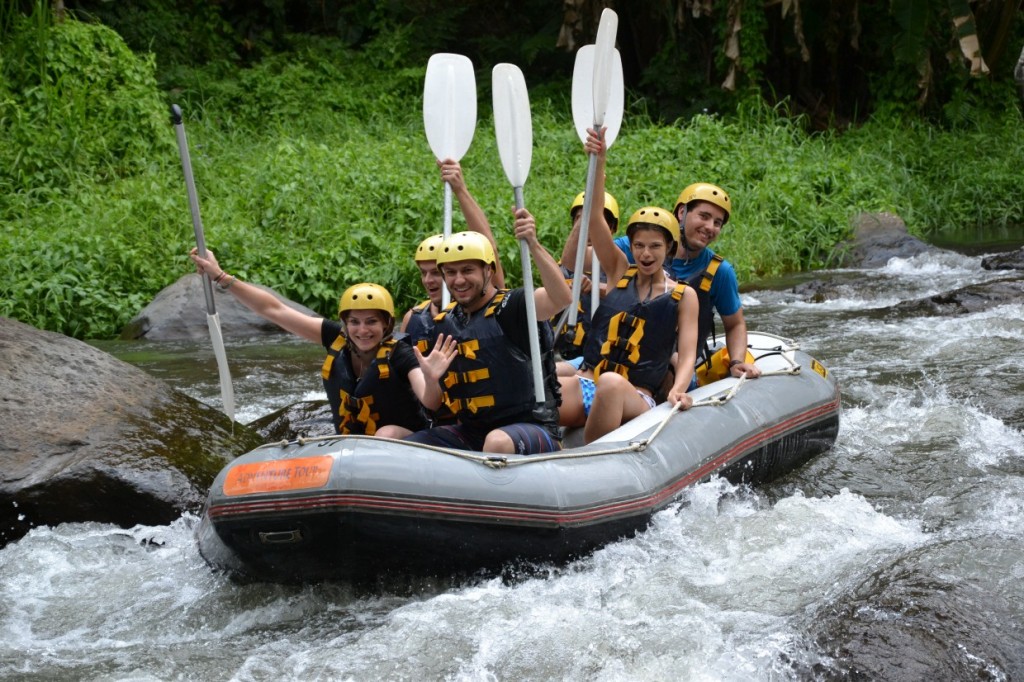
⇢ First layer: For warm water days when wetsuits aren’t necessary, quick-drying water shorts are a great option.
⇢ Waterproof sandals: When rafting, the best shoes are ones that stay on your feet, can get wet, and protect your toes. Choose water sandals with a heel strap or an old pair of sneakers you don’t mind getting them soaked. There are many sandal options available, such as Chaco, Teva and Keen, and Solomon makes a great pair of lightweight shoes that dry fast.
⇢ Headwear: Headwear is not always necessary, as you’ll be wearing a helmet. However, if the sun is out, a hat underneath your helmet will give you added protection against the sun.
⇢ Eyewear: Polarised sunglasses reduce reflection and glare on the river, and are a great choice for long days on the water. Be sure to secure your sunglasses tightly, with a retention strap that floats.
⇢ Sun protective clothing: If you’re rafting on a hot summer day, you’re likely to get burned, not only on your face, but also on your arms, legs, hands and feet. Sunscreen helps prevent sunburns, but it is difficult to reapply when you are wet.
Covering your skin with clothing is more effective at preventing sunburns. Use a lightweight pair of sun gloves, a rashguard on top, and either longer capris-style shorts or quick-drying sun tights for your legs.
⇢ Sunscreen for rafting: Unless you cover your entire face, you’ll need to use some sunscreen. The best eco-friendly sunscreen for water-based adventures is non-nano zinc oxide. Large particle non-nano zinc and titanium are the only active ingredients currently considered environmentally friendly. Avoid spray-on sunscreen, as inhaling the toxic sunscreen chemicals found in aerosol sprays has been linked to causing lung cancer.
Related: Best Watersports tips every traveller needs to know about in Bali
What not to wear on a white water rafting trip
When you go white water rafting, it is important to wear clothing that keeps you safe and protected. Some items of clothing can be a safety hazard and should not be worn while rafting. Below, you’ll find a selection of items that you should not wear or take with you while white water rafting:
⇢ Open-toe sandals: While sandals may be comfortable and allow your feet to breathe, they provide little protection against sharp objects or jagged rocks. If you fall out of the raft, your feet could easily become injured by these hazards.
⇢ Flip-flops: Similar to sandals, flip-flops offer very little protection for your feet and can come off if you fall into the river.
⇢ Cotton: It’s been mentioned in this post already, but I can’t stress this enough; cotton clothing is a terrible choice for cold weather/water rafting. It will not keep you warm and can make you feel colder when wet.
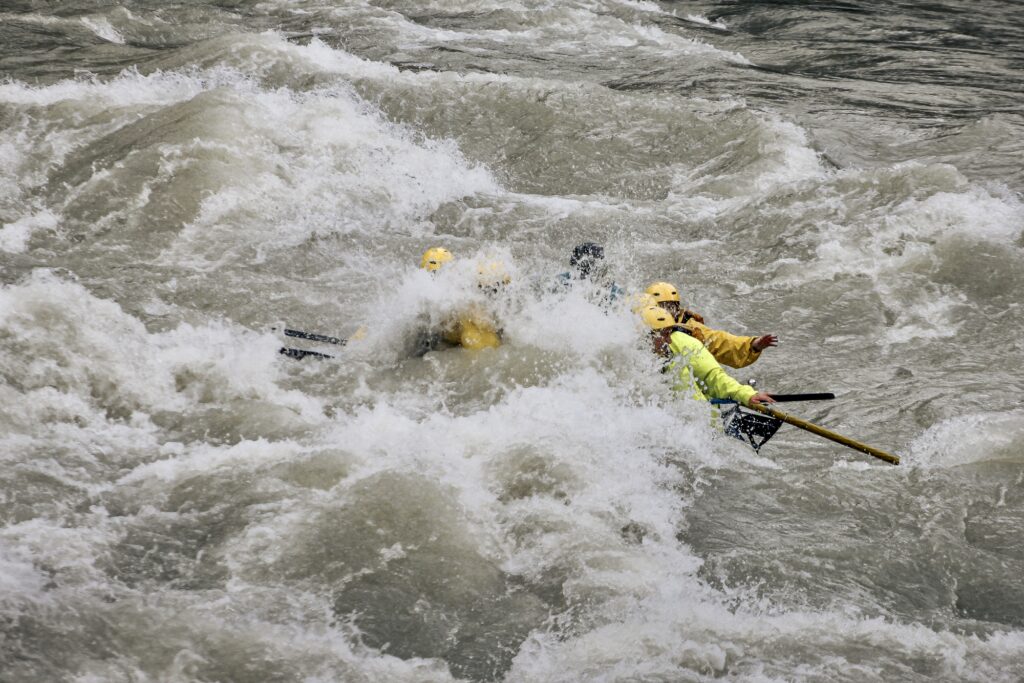
⇢ Keys, cellphones, wallets: Leave anything of value at home or in your car, as it can get lost or damaged in the water.
⇢ Jewellery: Avoid wearing jewellery while rafting. It can get caught on something and cause an injury. Rings also tend to slip off your fingers in cold water and get lost.
⇢ Jeans: Jeans are a poor choice of clothing for rafting, as they are tight and restrictive. They can also be heavy and difficult to move in when wet.
⇢ Scarves: Scarves pose a risk when rafting in cold weather, as they can become caught in the river or on obstacles around you, posing a risk of choking or other injuries.
Additional items to bring on your rafting trip
⇢ A change of clothes + towel: You’re likely going to be soaked after your adventure, so remember to bring dry clothes to change into. Cotton is fine once you’re warm and dry.
⇢ Dry bag: A dry bag is a must-have when white water rafting, as it will keep your belongings safe and dry in case you fall into the water.
⇢ GoPro: A GoPro is a great way to capture all the excitement of your white water rafting trip. However, most outfitters won’t allow you to hold your GoPro on the raft, as you’ll need both hands to paddle or hold on to the raft. Check with your outfitter to see if they have helmets to which you can attach your GoPro.
THANKS TO A GOPRO ATTACHED TO OUR HELMET, WE WERE ABLE TO CAPTURE OUR INCREDIBLE RAFT ON THE KICKING HORSE RIVER ↷
What to take with you on multi-day rafting trips
Multi-day rafting trips can be incredibly fun and rewarding, but they also require some preparation. Usually, on multi-day tours, your guides will take care of all the rafting and camping equipment. By packing appropriately and considering the potential weather conditions, you’ll be able to have a safe and enjoyable experience on your next rafting expedition.
Here is a list of what you should bring and what to keep in mind:
⇢ Day bag: This is the bag you will have access to on the raft and should include: sunscreen, medication, camera/phone, a waterproof jacket, wool socks and a sweater in case temperatures change while rafting.
⇢ Overnight bag: You won’t have access to this bag while on the raft, and should include everything you’ll need once back on land. Your overnight bag is not too dissimilar to what you would need during a regular camping trip: a sleeping pad and bag, pillow, all your clothing for the trip, toiletries, flashlight and any games or books you might want to take with you.
⇢ Camp layers vs river layers: Bring at least one dry layer you can put on once you arrive at camp. Your rafting layers won’t stay dry during the day, and there is a chance they won’t dry overnight at camp. When you head out onto the river the next day, make sure you have a dry layer left in your overnight bag.
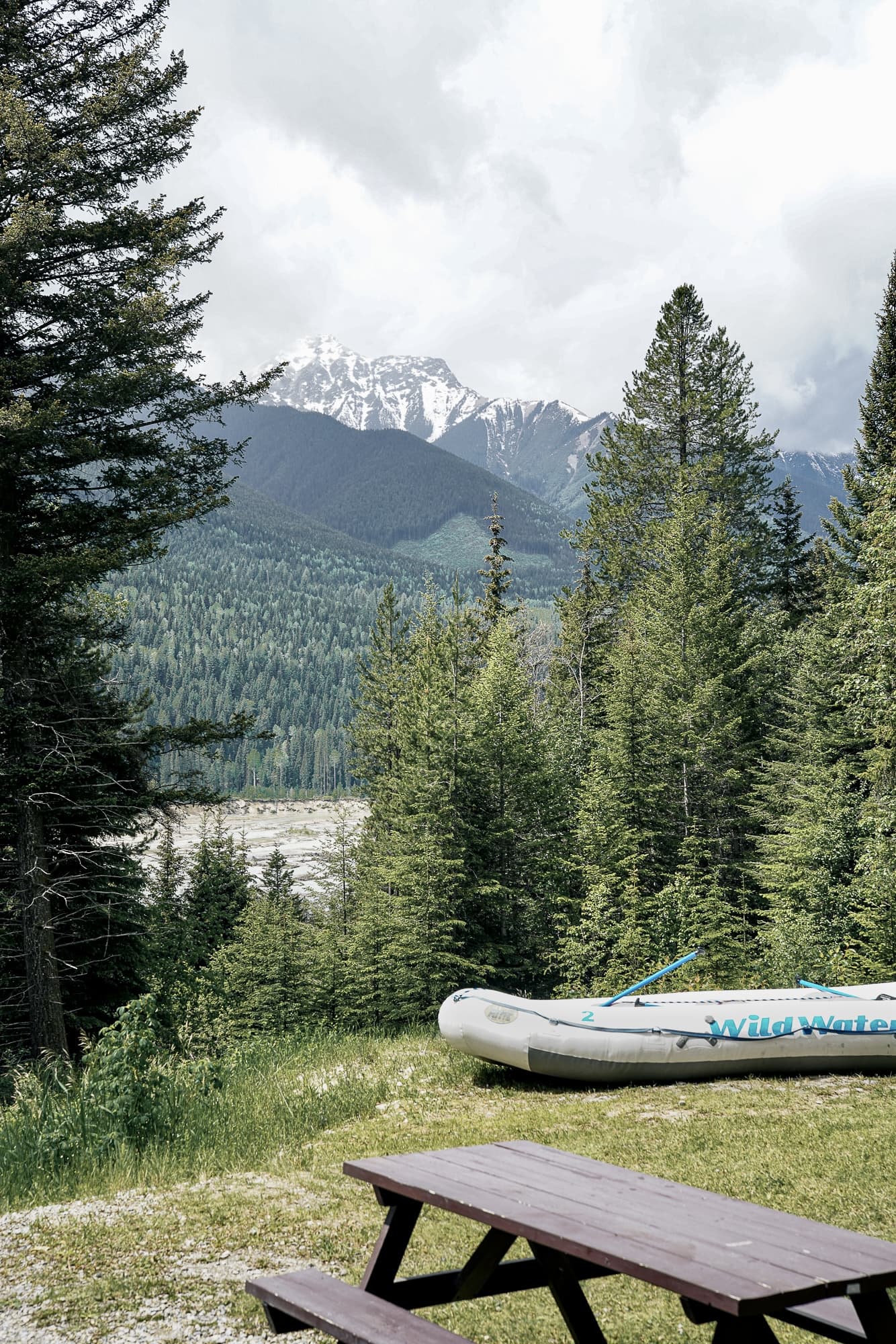
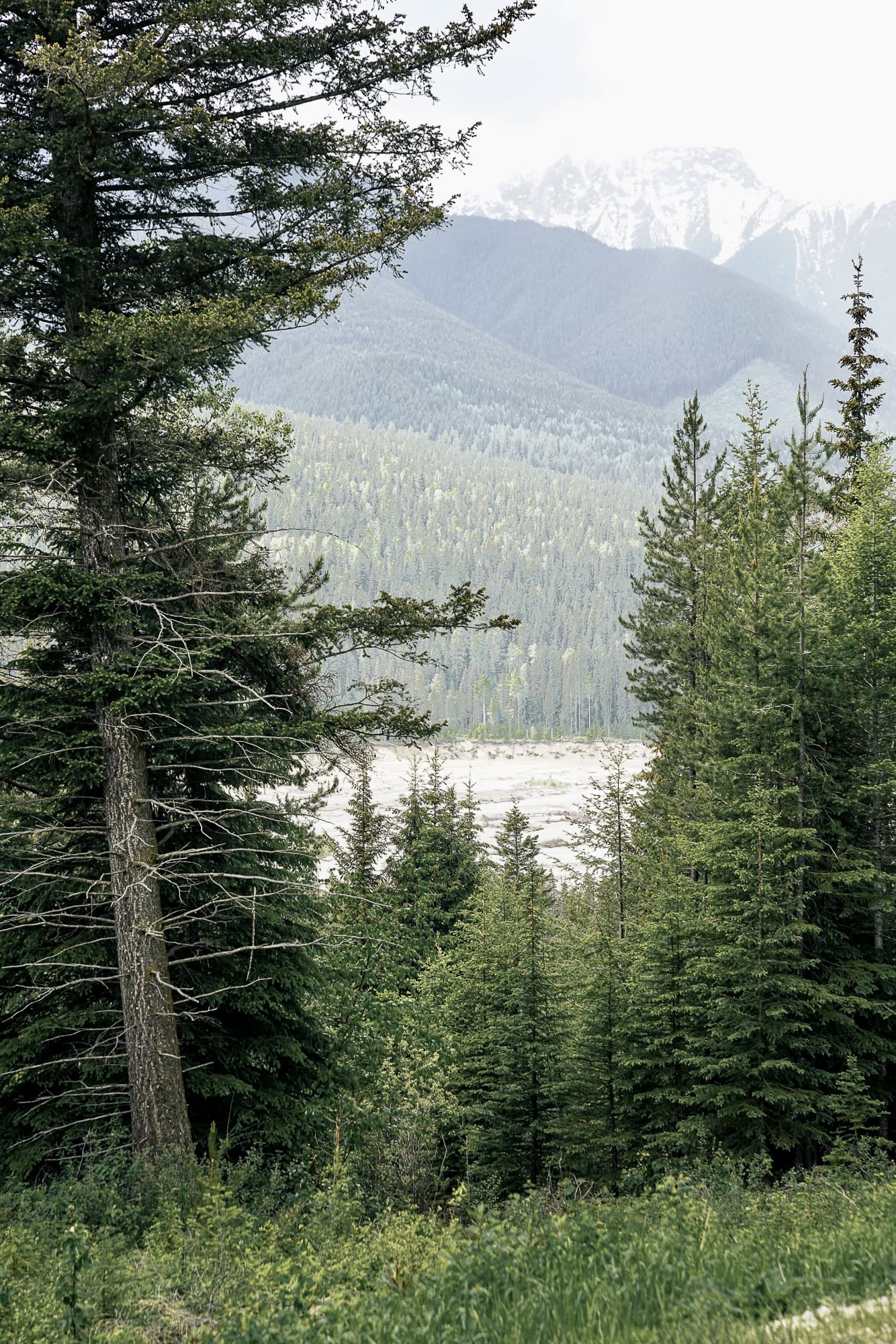
⇢ Don’t leave your gear outside: If you leave your gear outside at night, in cold temperatures, it will probably be covered in dew or frost by morning. The last thing you want is to wake up and find your outfit wet. Be sure to bring your clothes inside your tent at night to keep them as warm and dry as possible.
⇢ Extra bag for wet clothes: If your clothes are still wet the next day, having an extra bag to drop them in will ensure your other clothes stay dry. Just make sure to dry them again that evening.
⇢ Separate shoes for camp: You want to wear something comfortable while relaxing in the evening, but your rafting and hiking shoes won’t cut it (too heavy/bulky/wet). Pack separate shoes for the evening, as long as they don’t add too much more bulk to your overnight pack.
⇢ Sarong: The sarong is an excellent multi-purpose item to take with you. It works as a towel, blanket, skirt, sun protection, scarf or personal changing booth!
⇢ Wet wipes: Multi-day rafting trips mean you will be without a shower for a few days. Wet wipes are ⇢ perfect to wipe off any sunscreen, grime and sweat, and allow you to feel fresher before tucking in for the night.
Additional tips to make your rafting trip the best it can be
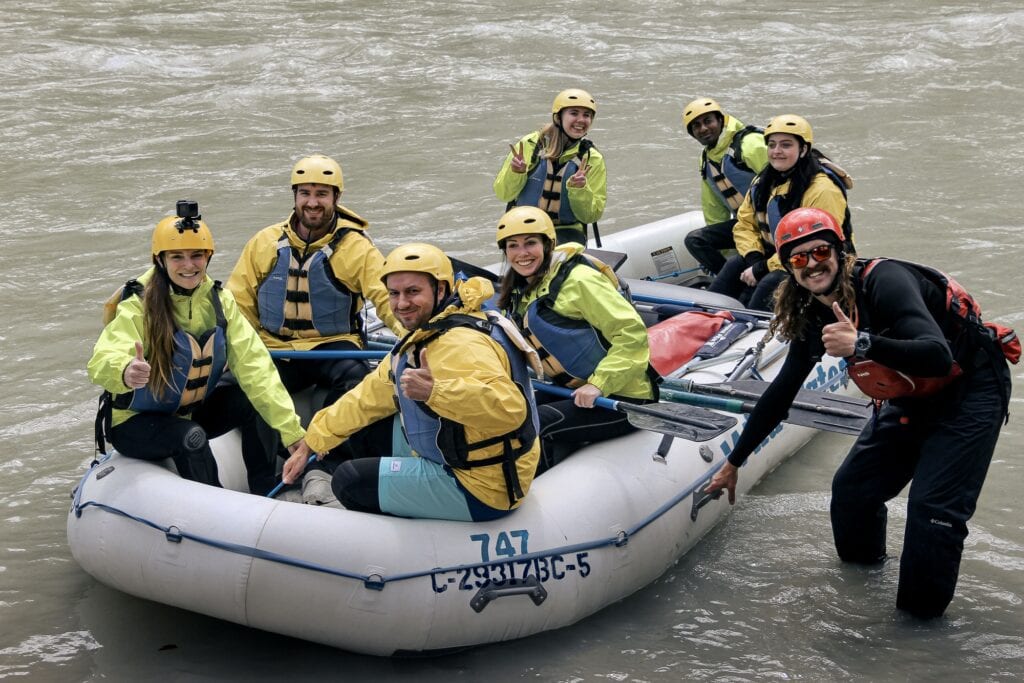
⇢ Rotate seats on the raft: The front of the boat is an exciting place to be. You’re right in the middle of the action, however, it’s also where you’ll get drenched the most. Especially in cold water, you’d want to rotate the seats from time to time. This way, you get a break from the constant splashes, and others on the boat get to experience the thrill in the front seat.
⇢ Stay hydrated: When you’re white water rafting, it’s important to stay hydrated. This means drinking plenty of fluids and even putting electrolytes into your water. You’ll want to have a bottle of water with you at all times, properly secured to the raft using a carabiner.
Personal rafting trips
You’ll be responsible for more of your own gear when planning a trip with family or friends. In addition to the items listed for commercial rafting (see above), you’ll also need to bring your own safety equipment and clothing. This article gives excellent tips if you’re going on a personal rafting trip. (insert link).
Final Thoughts on Clothing for Rafting Trips
Rafting is a thrilling, fun-filled activity that people of all ages can enjoy. Whether you’re rafting in warm weather or cold water, it’s important to dress appropriately so you can stay safe and comfortable while enjoying the ride. With these tips in mind, you’re ready to enjoy a fun day out on the river!
Remember: You are solely responsible for your own safety. No article or video can replace real-world practice and experience. This article is intended to be read as supplemental information only.

